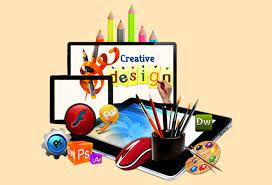
Graphic designing course in Islamabad
In today’s dynamic digital landscape, the demand for visually appealing content has never been higher. Whether you aspire to be a professional graphic designer or simply want to enhance your creative skills, a Graphic Designing Course is the key to unlocking your potential.
Course Benefits:
- Creativity Unleashed: The primary benefit of enrolling in a graphic designing course is the opportunity to unleash your creativity. Learn how to turn concepts into captivating visuals, allowing your ideas to come to life.
- Versatility in Skills: Graphic designing courses cover a wide range of tools and techniques. From mastering industry-standard software like Adobe Creative Suite to understanding design principles and typography, you’ll acquire a versatile skill set applicable to various creative endeavors.
- Industry-Relevant Knowledge: Stay abreast of the latest design trends and industry standards. Graphic designing courses often include real-world projects and case studies, providing hands-on experience that mirrors the challenges faced by professional designers.
- Career Opportunities: Equip yourself with the skills sought after in today’s job market. Graphic design professionals are in high demand across industries, including advertising, marketing, web development, and more.
Learning Outcomes:
- Proficiency in Design Software: Develop proficiency in industry-standard design software such as Adobe Illustrator, Photoshop, and InDesign. Mastering these tools is essential for executing professional-level designs.
- Understanding Design Principles: Gain a deep understanding of design principles such as balance, contrast, alignment, and hierarchy. Learn how to use color, typography, and imagery strategically to create visually compelling designs.
- Effective Communication through Design: Learn how to convey messages effectively through visual elements. Understand the psychology behind design choices and how they impact audience perception.
- Portfolio Development: Assemble a comprehensive portfolio showcasing your skills and creativity. A strong portfolio is a valuable asset when entering the job market or pursuing freelance opportunities.
Study Units:
- Introduction to Graphic Design: Explore the fundamental principles and history of graphic design.
- Design Software Mastery: Dive into hands-on training with industry-standard software tools.
- Typography and Layout Design: Understand the art of arranging text and visuals for maximum impact.
- Color Theory and Application: Learn how to use color effectively to evoke emotions and create visually appealing designs.
- Digital and Print Design: Explore the differences and nuances between designing for digital platforms and print media.
- Brand Identity and Logo Design: Master the art of creating memorable brand identities and logos.
Who Is This Course For?
- Aspiring Designers: Individuals looking to pursue a career in graphic design.
- Marketing and Communication Professionals: Enhance the design skills of professionals in marketing and communication roles.
- Entrepreneurs and Small Business Owners: Gain the ability to create visually striking content for your business.
- Creative Enthusiasts: Anyone with a passion for creativity and design.
Future Progression:
Upon completing a graphic designing course, you open the door to a multitude of opportunities:
- Freelance Design: Work independently on projects for clients across various industries.
- In-House Designer: Join creative teams within companies to contribute to their design needs.
- Web and UI/UX Design: Specialize in designing engaging and user-friendly websites and interfaces.
- Art Direction: Progress to roles involving strategic planning and supervision of design projects.
- Entrepreneurship: Use your skills to start your own design studio or consultancy.
Conclusion:
Embarking on a graphic designing course is not just a learning journey; it’s a creative odyssey that transforms your passion into a marketable skill set. Whether you’re dreaming of a career as a professional designer or seeking to elevate your creative abilities, a graphic designing course is the gateway to unlocking your full artistic potential. Embrace the opportunity to learn, create, and inspire through the power of graphic design.